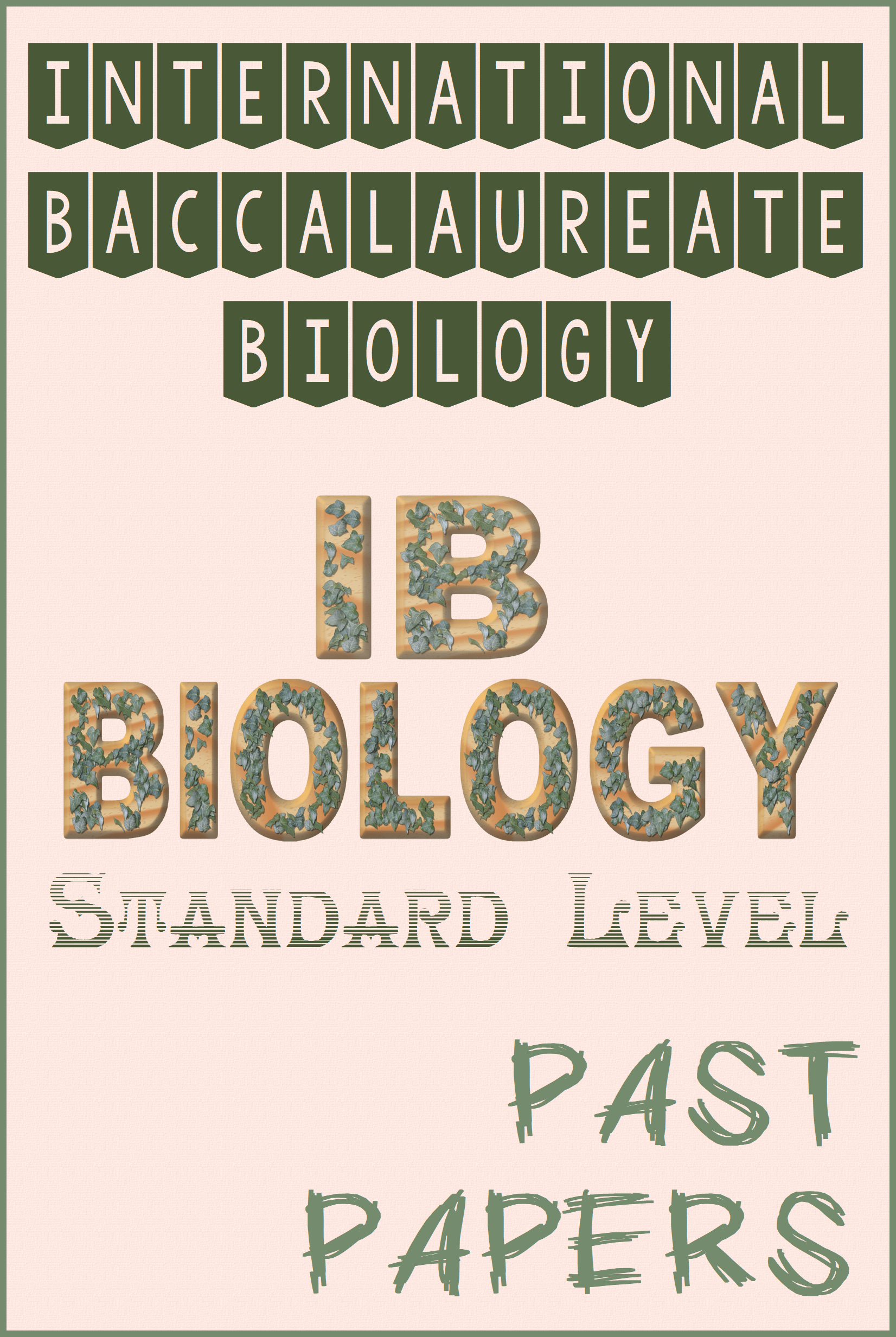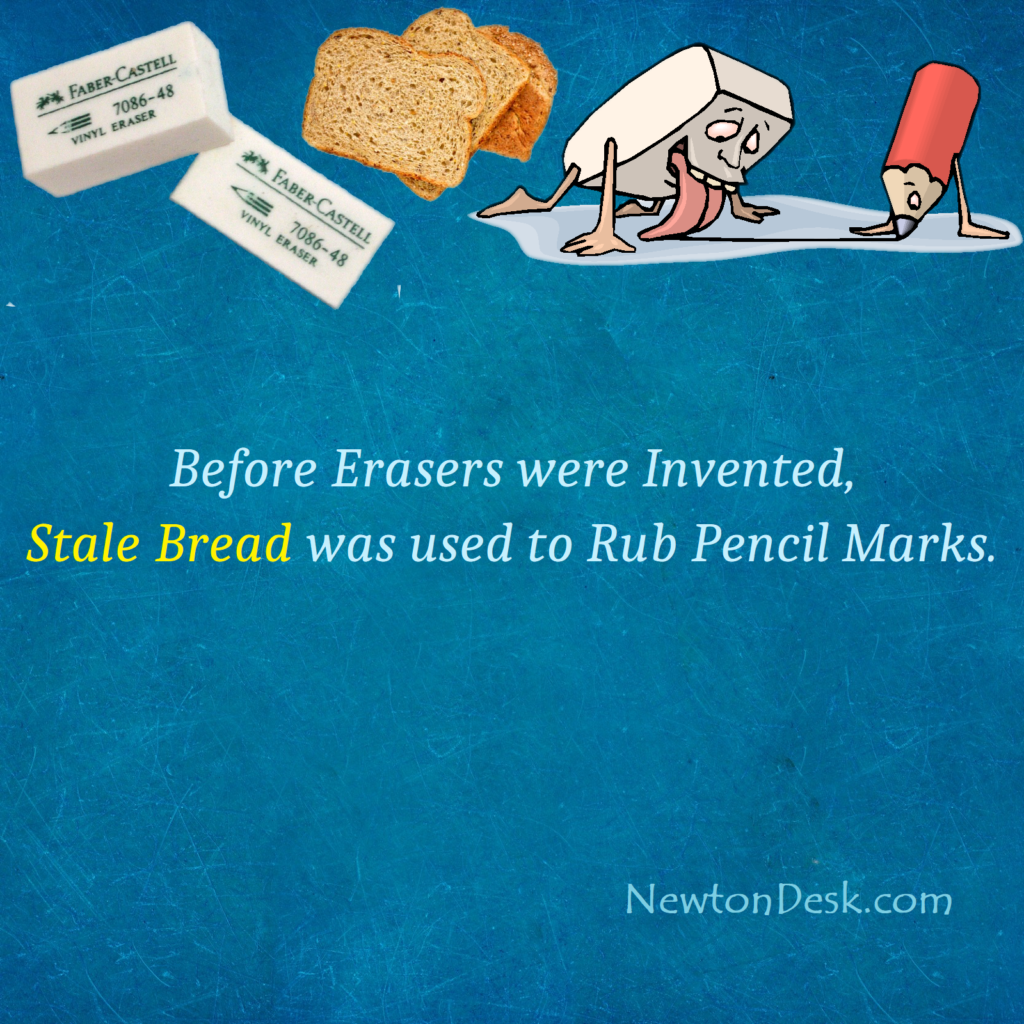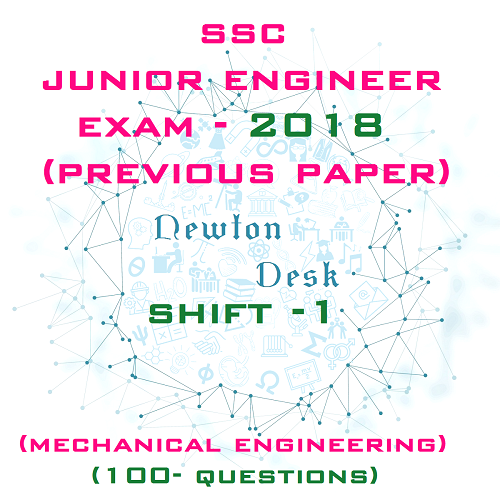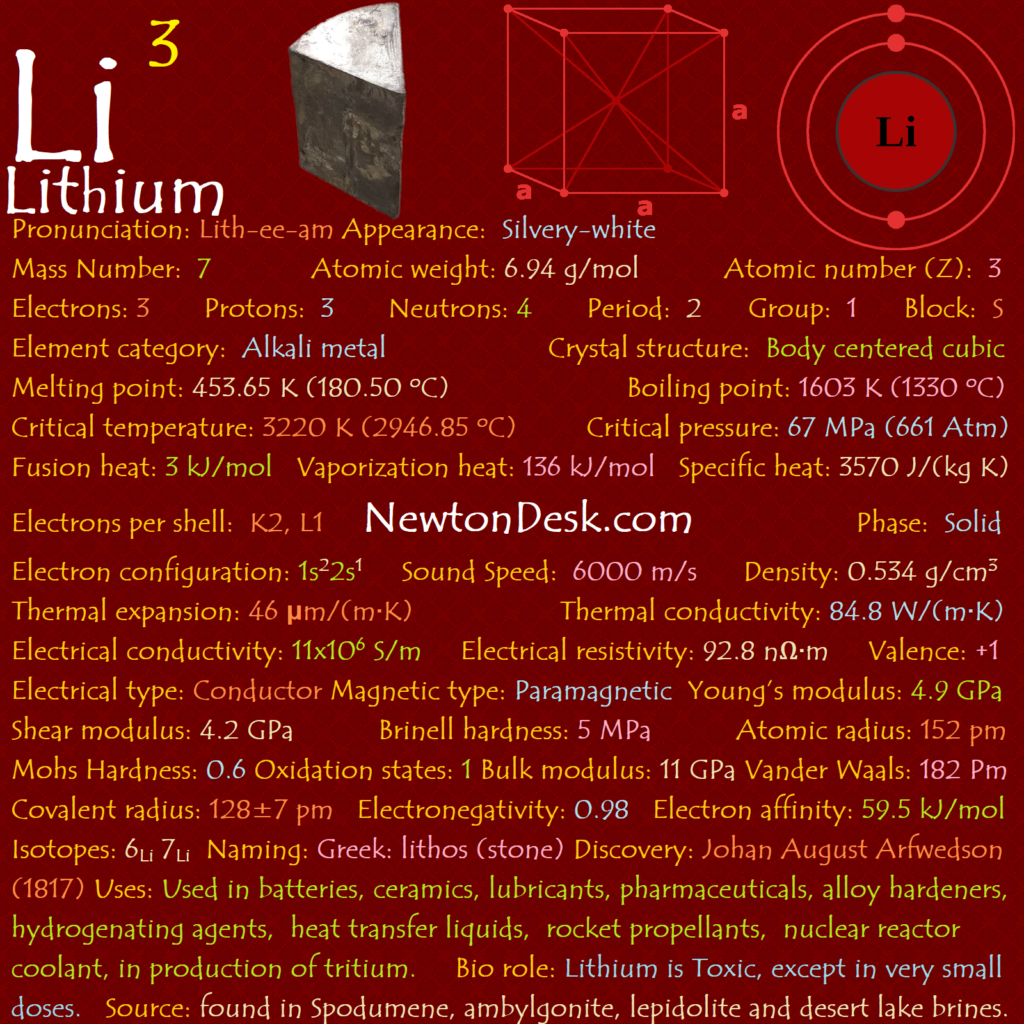International Baccalaureate IB Biology Past Papers Standard Level (SL)
International baccalaureate (IB) is an International Non-profit Organization, which offers Four high-quality International education Programmes (Primary Years, Middle Years, Diploma, & Career-related) to students from age of 3 to 19 in more than 146 countries. It’s formally known as International baccalaureate Organization (IBO).
IB Diploma Programme’s aim is to develop high school students who have excellent breadth & depth of knowledge – and who flourish physically, Intellectually, Emotionally & Ethically. IB Diploma has 6 groups to choose the subjects; Group 1: Studies in Language & Literature Group 2: Language Acquisition Group 3: Individuals & Societies Group 4: Sciences Group 5: Mathematics Group 6: Arts
International baccalaureate (IB) Biology Subject comes in Science group of IB Diploma Programme after 10th or secondary education. Here, High school or IB Students will get all the guidance, Notes and the Past papers of IB Biology SL, that will help you to understand about the level of this test and to achieve High score in Exam.
| IB BIOLOGY EXAM DETAILS (SL) | |
| ABOUT IB PROGRAMME | Click Here |
| SYLLABUS (SL & HL) | Click Here Click Here |
| IB BIOLOGY GUIDE | Click Here |
| IB BIOLOGY (HL) PAST PAPERS | Click Here |
| OTHER EXAMS PAST PAPERS | Click Here |
| PRIME NOTES | Click Here |
| FREE NOTES | – |
| BOOKS | – |
| OTHER BIOLOGY EXAMS | |
| INTERNATIONAL BIOLOGY OLYMPIAD (IBO) | Click Here |
IB BIOLOGY SL PAST PAPERS QUESTIONS
We are providing the Past year papers Questions & Solutions of International Baccalaureate (IB) Biology Standard Level (SL). You could increase your concept up to the high level if you will be able to solve all previous questions. Good Luck!
| IB BIOLOGY PAST PAPERS STANDARD LEVEL (SL) QUESTIONS | |||
| Year | Exam Type | Problems | Solutions |
| IB Biology Past Papers SL (2016-2020) | |||
| 2021 (May) | SL (P1) | Q1-Q30 Z1 (MCQs) | |
| Questions | Answers | ||
| Q1-Q30 Z2 (MCQs) | |||
| Questions | Answers | ||
| SL (P2) | Q1-Q7 Z1 (Antiretroviral drugs for HIV, metabolic processes in Plant cell, Celiac disease, Squid for nerve impulses, wings of an insect, bird and bat, structure & function of proteins in cells, process of inhalation, alveoli role) | ||
| Questions | Answers | ||
| Q1-Q6 Z2 (neonicotinoid pesticides decline honeybee populations, stages in the cell cycle, enzyme Rubisco from common pea, crustacean jellyfish organism physiology and feeding ecology, structure of starch, congenital lactose intolerance, Tuberculosis) | |||
| Questions | Answers | ||
| 2020 (Nov.) | SL (P1) | Q1-Q30 (MCQs) | |
| Questions | Answers | ||
| SL (P2) | Q1-Q6 (Risk of disease in young adults, protozoan Paramecium caudatum, amphipathic properties of phospholipids, neurons diagram, DNA diagram, Mutation, carbon compounds, alpha-D-glucose, ultrastructure of a prokaryotic cell, first division of meiosis, infectious disease) | ||
| Questions | Answers | ||
| SL (P3) | Q1-Q3 (body mass index, elasticity of arteries and veins, carbon dioxide for photosynthesis) Q4-Q7 (Neurobiology and behaviour) Q8-Q11 (Biotechnology and bioinformatics) Q12-Q15 (Ecology and conservation) Q16-Q19 (Human physiology) | ||
| Questions | Answers | ||
| 2019 (Nov) | SL (P1) | Q1-Q30 (MCQs) | |
| Questions | Answers | ||
| SL (P2) | Q1-Q6 (Cultivated rice human food, sequence of mRNA (genetic code), section of a polypeptide, function of Rubisco and of spider silk, cell theory, eukaryotic homologous chromosomes, Singer-Nicolson model, movement of energy and inorganic nutrients, prevent blood loss, ABO blood groups, passive gas exchange) | ||
| Questions | Answers | ||
| SL (P3) | Q1-Q3 (osmosis in carrot, beta-galactosidase enzyme, spinach leaf pigment extract) Q4-Q7 (Neurobiology and behaviour) Q8-Q11 (Biotechnology and bioinformatics) Q12-Q15 (Ecology and conservation) Q16-Q19 (Human physiology) | ||
| Questions | Answers | ||
| 2019 (May) | SL (P1) | Q1-Q30 Z1 (MCQs) | |
| Questions | Answers | ||
| Q1-Q30 Z2 (MCQs) | |||
| Questions | Answers | ||
| SL (P2) | Q1-Q8 Z1 (Ebola virus disease (EVD), mitochondrion under electron micrograph, human heart, structure of an alveolus, common names and binomial names, chromosomes from a body cell, production of mRNA, functions of proteins, speciation, detritivores obtain nutrition, role of amylase in digestion, photosynthesis) | ||
| Questions | Answers | ||
| Q1-Q6 Z2 (Mice defence systems, (E)-β-farnesene (EBF) chemical, stage of mitosis labelled X, biomass decreasing causes in terrestrial ecosystems, natural selection of organisms, cause of mutation, cladogram includes four marsupial families, types of membrane transport, structure of a dipeptide, enzymes in digestion, endosymbiotic theory, how photosynthesis produces glucose, blood glucose levels) | |||
| Questions | Answers | ||
| SL (P3) | Z1 Q1-Q3 (freeze fracture for Membrane structure, fungi in nutrient cycling, William Harvey circulation of blood) Q4-Q6 (Neurobiology and behaviour) Q7-Q9 (Biotechnology and bioinformatics) Q10-Q14 (Ecology and conservation) Q15-Q18 (Human physiology) | ||
| Questions | Answers | ||
| Z2 Q1-Q3 (plasma membrane, Cairns’ technique, radioactive nucleotides, DNA autoradiogram, study of aerobic power at different sea level) Q4-Q7 (Neurobiology and behaviour) Q8-Q11 (Biotechnology and bioinformatics) Q12-Q15 (Ecology and conservation) Q16-Q19 (Human physiology) | |||
| Questions | Answers | ||
| 2018 (Nov.) | SL (P1) | Q1-Q30 (MCQs) | |
| Questions | Answers | ||
| SL (P2) | Q1-Q6 (Tobacco smoking and mortality, cellulose of plant cell, boreal forest, heart circulatory system, prokaryotic cell structure, proteomes of cells, cell theory, red-green colour blindness, adaptive radiation, pathogens) | ||
| Questions | Answers | ||
| SL (P3) | Q1-Q3 (variegated Pelargonium plant, inhibit photosynthesis, Lung capacity of student recorded using a spirometer, mitosis in a cell of an onion (Allium cepa) root tip) Q4-Q7 (Neurobiology and behaviour) Q8-Q11 (Biotechnology and bioinformatics) Q12-Q15 (Ecology and conservation) Q16-Q19 (Human physiology) | ||
| Questions | Answers | ||
| 2018 (May) | SL (P1) | Q1-Q30 Z1 (MCQs) | |
| Questions | Answers | ||
| Q1-Q30 Z2 (MCQs) | |||
| Questions | Answers | ||
| SL (P2) | Z1 Q1-Q6 (Land snail Cepaea nemoralis, structure of amylose & amylopectin, ABO blood groups (Punnett grid), viruses are not as living organisms, plant phylum, role of plant pigments in photosynthesis, fluid mosaic model of plasma membrane, functions of life, cycling of carbon in an ecosystem, alveolus in a human lung, pneumonia, bacteria and other pathogens diseases) | ||
| Questions | Answers | ||
| Z2 Q1-Q11 (Edible insects (traditional human diets), structure of DNA (Watson and Crick), eukaryotic & prokaryotic cells, enzymes in replication, palisade mesophyll cell, autotrophic & heterotrophic nutrition, energy and nutrients, activity of enzymes, enzyme–substrate specificity, fluid mosaic model, villus epithelium cells, nerve impulse, bacteria role in carbon cycle, evolution of antibiotic resistance in bacteria, genetically modifying bacteria) | |||
| Questions | Answers | ||
| SL (P3) | Q1-Q3 Z1 (Catalase decomposes hydrogen peroxide (H2O2), mesocosms, biomass of zooplankton, TEM of pancreatic cells) Q4-Q7 (Neurobiology and behaviour) Q8-Q11 (Biotechnology and bioinformatics) Q12-Q15 (Ecology and conservation) Q16-Q19 (Human physiology) | ||
| Questions | Answers | ||
| Q1-Q3 Z2 (Chromatography (spinach, red alga & brown alga), White sage & Slender oat, effect of exercise on ventilation) Q4-Q7 (Neurobiology and behaviour) Q8-Q10 (Biotechnology and bioinformatics) Q11-Q14 (Ecology and conservation) Q15-Q18 (Human physiology) | |||
| Questions | Answers | ||
| 2017 (Nov.) | SL (P1) | Q1-Q30 (MCQs) | |
| Questions | Answers | ||
| SL (P2) | Q1-Q7 (Chronic Obstructive Pulmonary Disease (COPD), TEM of rotavirus particles, plasmids in biotechnology, water molecule, leaf from Dryopteris arguta, trophic levels in a food chain, disaccharide and monomers, enzymes secreted by the pancreas during digestion, cis-fatty and trans-fatty acids, Reproduction can be sexual or asexual, endosymbiotic theory, hormones used to control the human menstrual cycle, cloning in eukaryotes, palisade mesophyll cell, process of photosynthesis, process of peat formation) | ||
| Questions | Answers | ||
| SL (P3) | Q1-Q3 (thermal properties of water, Thin-layer chromatography on red and brown algae, pigments in spinach leaves, transverse section through blood vessels) Q4-Q7 (Neurobiology and behaviour) Q8-Q11 (Biotechnology and bioinformatics) Q12-Q15 (Ecology and conservation) Q16-Q19 (Human physiology) | ||
| Questions | Answers | ||
| 2017 (May) | SL (P1) | Q1-Q30 Z1 (MCQs) | |
| Questions | Answers | ||
| Q1-Q30 Z2 (MCQs) | |||
| Questions | Answers | ||
| SL (P2) | Q1-Q6 Z1 (Native oyster populations, juvenile gastropod and oyster, Louis Pasteur’s swan-necked flasks, function of life in Paramecium, use of adult stem cells, role of decomposers in an ecosystem, greenhouse effect, wavelength of the radiation, short-tailed albatross (Phoebastria albatrus) nests and breeds, evolutionary routes for the turtle, natural classification in biodiversity research, DNA research, complementary base pairing, polymerase chain reaction (PCR), genetically modified crops, small intestine moves, digests and absorbs food, fatty acids in food, leptin controls appetite) | ||
| Questions | Answers | ||
| Q1-Q8 Z2 (dark chocolate health benefits, aerobic capacity of muscle, water–no exercise & Epi–no exercise group, Melatonin hormone secreted in pineal gland, exocrine gland cell of pancreas, human embryonic stem cells (hESC), Stargardt’s disease, gene Mutations, phylum arthropoda, ribosomes in translation, blood proteins in defence mechanisms, function of starch, production of carbohydrates in photosynthesis, carbon cycle) | |||
| Questions | Answers | ||
| SL (P3) | Z1 Q1-Q3 (Urease enzyme, cabomba caroliniana water plant light intensities, spirometer to measure ventilation rate between resting & exercising) Q4-Q7 (Neurobiology and behaviour) Q8-Q12 (Biotechnology and bioinformatics) Q13-Q16 (Ecology and conservation) Q17-Q21 (Human physiology) | ||
| Questions | Answers | ||
| Z2 Q1-Q3 (oxygen consumption of Oplegnathus insignis fish, Keratin protein in (hair nails, wool, horns and feathers), Leptin diet) Q4-Q8 (Neurobiology and behaviour) Q9-Q13 (Biotechnology and bioinformatics) Q14-Q17 (Ecology and conservation) Q18-Q22 (Human physiology) | |||
| Questions | Answers | ||
| 2016 (Nov.) | SL (P1) | Q1-Q30 (MCQs) | |
| Questions | Answers | ||
| SL (P2) | Q1-Q7 (mayflies (Baetis bicaudatus), Oncorhynchus mykiss, food web, North American beaver (Castor canadensis), electron micrograph, prokaryotic or eukaryotic cell, genetically identical nuclei, cell cycle, metabolism, anabolism or catabolism, diploid & haploid number for horses and donkeys, archaea, eubacteria and eukaryote, human circulatory system, capillaries and tissues, arteries and veins, alveoli, energy enters and flows through ecosystems, extract phosphates and nitrates from soil, pyramid of energy) | ||
| Questions | Answers | ||
| SL (P3) | Q1-Q3 (laboratory mouse in respirometer (oxygen consumption), amylase enzyme from digestive system, organ in the human body) Q4-Q7 (Neurobiology and behaviour) Q8-Q10 (Biotechnology and bioinformatics) Q11-Q14 (Ecology and conservation) Q15-Q18 (Human physiology) | ||
| Questions | Answers | ||
| 2016 (May) | SL (P1) | Q1-Q30 Z0 (MCQs) | |
| Questions | Answers | ||
| SL (P2) | Q1-Q7 Z0 (multicellular organisms, embryonic tissue, nomogram, circulatory system, saturated fatty acid, leptin hormone helps to prevent obesity, thermal properties of water and methane, short and long wave radiation with greenhouse gases, nucleotides in the polynucleotide of DNA, cladogram, action of enzymes, genetic diseases, propagation of electrical impulses, eukaryotic plant cell in electron micrograph, aerobic respiration in unicellular eukaryotic organism, process of evolution) | ||
| Questions | Answers | ||
| SL (P3) | Q1-Q3 Z0 (Solutions of ions, osmolarity of the plant tissue, plasma membrane of a neuron, mechanism of DNA replication, nitrogen composition of the DNA band, exchange of matter and energy in closed mesocosm) Q4-Q8 (Neurobiology and behaviour) Q9-Q12 (Biotechnology and bioinformatics) Q13-Q16 (Ecology and conservation) Q17-Q20 (Human physiology) | ||
| Questions | Answers | ||
IB Biology SL Past Papers
| Year | Exam Type | Problems | Solutions |
| IB Biology Past Papers SL (2011-2015) | |||
| 2015 (Nov.) | SL (P1) | Q1-Q30 (MCQs) | |
| Questions | Answers | ||
| SL (P2) | Q1-Q7 (Sockeye salmon (Oncorhynchus nerka) in marine water, virus and bacterium, sigmoid population growth, pedigree chart for the blood groups, role of glucagon in homeostasis, section of DNA, gene transfer technique, evolution, stages of cell cycle, translation in cells, production of a dipeptide, structure of a generalized dipeptide, motor neuron, process of endocytosis) | ||
| Questions | Answers | ||
| SL (P3) | Q1-Q3 (Human nutrition and health) Q4-Q6 (Physiology of exercise) Q7-Q9 (Cells and energy) Q10-Q12 (Evolution) Q13-Q15 (Neurobiology and behaviour) Q16-Q18 (Microbes and biotechnology) Q19-Q21 (Ecology and conservation) |
||
| Questions | Answers | ||
| 2015 (May) | SL (P1) | Q1-Q30 Z1 (MCQs) | |
| Questions | Answers | ||
| Q1-Q30 Z2 (MCQs) | |||
| Questions | Answers | ||
| SL (P2) | Q1-Q7 Z1 (Diabetes (β cell) in the pancreas, blood glucose levels, function of lactose, type of sugar lactose, production of lactose-free milk, motor neuron, nerve impulses, red, green and blue light by chlorophyll, increasing light intensity on photosynthesis, prokaryotic cell, pathogens, evolution of antibiotic, adult male reproductive system, DNA profiling, colour blindness, structure of three water molecules, global rise in temperature, properties of phospholipids) | ||
| Questions | Answers | ||
| Q1-Q7 Z2 (mosquito-borne disease (Malaria), Plasmodium parasite, highest incidence of malaria, cell theory, electron micrograph of the Escherichia coli cell, forest food web from North America, pathogen, antibody production, antibiotics are effective against bacterial diseases but not against viral diseases, genetic code, role of proteins in active and passive transport of molecules, ATP in animal cells, Meiosis in fertilization, technique for cloning, therapeutic cloning in humans, human heart, nerve message passes from one neuron to another neuron.) | |||
| Questions | Answers | ||
| SL (P3) | Z1 Q1-Q3 (Human nutrition and health) Q4-Q6 (Physiology of exercise) Q7-Q9 (Cells and energy) Q10-Q12 (Evolution) Q13-Q15 (Neurobiology and behaviour) Q16-Q18 (Microbes and biotechnology) Q19-Q21 (Ecology and conservation) |
||
| Questions | Answers | ||
| Z2 Q1-Q3 (Human nutrition and health) Q4-Q6 (Physiology of exercise) Q7-Q9 (Cells and energy) Q10-Q12 (Evolution) Q13-Q15 (Neurobiology and behaviour) Q16-Q18 (Microbes and biotechnology) Q19-Q21 (Ecology and conservation) |
|||
| Questions | Answers | ||
| 2014 (Nov.) | SL (P1) | Q1-Q30 (MCQs) | |
| Questions | Answers | ||
| SL (P2) | Q1-Q7 (inhibitor of enzyme transpeptidase, ampicillin on growth of cells, surface of an animal cell, greenhouse effect, fossil fuels to solar energy, Reforestation of desert, production of methane, food chain, population growth in UK, Mitosis, DNA profiling, sickle-cell anemia disease, disaccharides and polysaccharides in plants and animals, anaerobic and aerobic cell respiration, blood glucose concentration, defence against pathogens, Escherichia coli pathogen, transmission and social implications of AIDS) | ||
| Questions | Answers | ||
| SL (P3) | Q1-Q3 (Human nutrition and health) Q4-Q6 (Physiology of exercise) Q7-Q9 (Cells and energy) Q10-Q12 (Evolution) Q13-Q15 (Neurobiology and behaviour) Q16-Q18 (Microbes and biotechnology) Q19-Q21 (Ecology and conservation) |
||
| Questions | Answers | ||
| 2014 (May) | SL (P1) | Q1-Q30 Z1 (MCQs) | |
| Questions | Answers | ||
| Q1-Q30 Z2 (MCQs) | |||
| Questions | Answers | ||
| SL (P2) | Q1-Q6 Z1 (frogs in lakes with and without trout, coronary artery and cardiac vein, meiotic division of chromosome, carbon cycle, carbon dioxide concentration in photosynthesis, CO2 in anaerobic and in aerobic respiration, structure of membranes, eukaryotic and prokaryotic cells, vesicles used to transport proteins, female reproductive system, ethical issues with IVF, application of DNA profiling) | ||
| Questions | Answers | ||
| Q1-Q7 Z2 (Ozone gas to block high-energy ultraviolet light (UV), electron micrograph of a liver cell, phylum of the plant, Hemophilia, molecular structure of DNA, therapeutic use of stem cells, genetic modification in organisms, membrane proteins, polypeptide formation, production of antibodies, pH conditions, energy flow in food chain, control of blood glucose) | |||
| Questions | Answers | ||
| SL (P3) | Z1 Q1-Q3 (Human nutrition and health) Q4-Q6 (Physiology of exercise) Q7-Q9 (Cells and energy) Q10-Q12 (Evolution) Q13-Q15 (Neurobiology and behaviour) Q16-Q18 (Microbes and biotechnology) Q19-Q21 (Ecology and conservation) |
||
| Questions | Answers | ||
| Z2 Q1-Q3 (Human nutrition and health) Q4-Q6 (Physiology of exercise) Q7-Q9 (Cells and energy) Q10-Q12 (Evolution) Q13-Q15 (Neurobiology and behaviour) Q16-Q18 (Microbes and biotechnology) Q19-Q21 (Ecology and conservation) |
|||
| Questions | Answers | ||
| 2013 (Nov.) | SL (P1) | Q1-Q30 (MCQs) | |
| Questions | Answers | ||
| SL (P2) | Q1-Q7 (Skeletal muscle fibres (type l & type ll diabetes), structures in animal cell, structure of DNA, human karyotype, carbon cycle, photosynthesis, mechanism of ventilation in humans, sigmoid population growth curve, overproduction of offspring, hormones in the menstrual cycle, molecular structure of membrane, enzyme-substrate specificity, transmission of nerve impulses, synaptic transmission) | ||
| Questions | Answers | ||
| SL (P3) | Q1-Q3 (Human nutrition and health) Q4-Q6 (Physiology of exercise) Q7-Q9 (Cells and energy) Q10-Q12 (Evolution) Q13-Q15 (Neurobiology and behaviour) Q16-Q18 (Microbes and biotechnology) Q19-Q21 (Ecology and conservation) |
||
| Questions | Answers | ||
| 2013 (May) | SL (P1) | Q1-Q30 Z1 (MCQs) | |
| Questions | Answers | ||
| Q1-Q30 Z2 (MCQs) | |||
| Questions | Answers | ||
| SL (P2) | Q1-Q7 Z1 (organophosphorus pesticides OP (serious nerve damage), Recombinant human acetylcholinesterase (rAChE), vesicles (transport materials in cell), autotrophs and heterotrophs, mitosis in an animal cell, sexual reproduction (evolution), useful component of blood, structure and function of arteries, capillaries and veins, leucocytes against pathogens, red, blue and green light by chlorophyll, process of photosynthesis, precautionary principle, codominant allele, recessive allele, locus and sex linkage, ABO blood groups, males inherit hemophilia) | ||
| Questions | Answers | ||
| Q1-Q7 Z2 (Obesity (excessive weight), production of ribose, pancreatic cancer, n heterozygous and homozygous genotypes, animal population, spore of fungus (Tilletia controversa), pH condition for lipase, enzymes in gene transfer using plasmids, changes of pH, substrate concentration and temperature on enzyme activity, lysosome, Golgi apparatus, free ribosomes, plasma membrane, rough endoplasmic reticulum, anaerobic and aerobic cell respiration in eukaryotes, mechanism of ventilation in lungs, energy stored in plants, pyramid of energy, control of body temperature) | |||
| Questions | Answers | ||
| SL (P3) | Z1 A1-A3 (Human nutrition and health) B1-B3 (Physiology of exercise) C1-C3 (Cells and energy) D1-D3 (Evolution) E1-E3 (Neurobiology and behaviour) F1-F3 (Microbes and biotechnology) G1-G3 (Ecology and conservation) |
||
| Questions | Answers | ||
| Z2 A1-A3 (Human nutrition and health) B1-B3 (Physiology of exercise) C1-C3 (Cells and energy) D1-D3 (Evolution) E1-E3 (Neurobiology and behaviour) F1-F3 (Microbes and biotechnology) G1-G3 (Ecology and conservation) |
|||
| Questions | Answers | ||
| 2012 (Nov.) | SL (P1) | Q1-Q30 (MCQs) | |
| Questions | Answers | ||
| SL (P2) | Q1-Q7 (Surfactants (treatment of respiratory system disease in premature babies), dichotomous key to organisms, animal cells and plant cells, mitosis in a cell, Sickle-cell anemia, sickle-cell allele, condensation and hydrolysis in metabolic reactions, enzymes catalyse Metabolic reactions, digestion of food, habitat, population, community and ecosystem, energy flows through ecosystem, genetic modification, structure of motor neuron, heartbeat control by nervous and endocrine systems, principles of synaptic transmission) | ||
| Questions | Answers | ||
| SL (P3) | A1-A3 (Human nutrition and health) B1-B3 (Physiology of exercise) C1-C3 (Cells and energy) D1-D3 (Evolution) E1-E3 (Neurobiology and behaviour) F1-F3 (Microbes and biotechnology) G1-G3 (Ecology and conservation) |
||
| Questions | Answers | ||
| 2012 (May) | SL (P1) | Q1-Q30 Z1 (MCQs) | |
| Questions | Answers | ||
| Q1-Q30 Z2 (MCQs) | |||
| Questions | Answers | ||
| SL (P2) | Z1 Q1-Q7 (Bottlenose dolphins (Tursiops truncatus), plant and animal cells, simple diffusion, role of protein pumps, RNA & DNA nucleotide, global warming for organisms, evolution, sexual reproduction, types of carbohydrate, hydrolysis in digestion, flow of energy, characteristics of stem cells in medicine, sex-linked condition in humans, karyotyping in human genetics, homeostasis, body temperature in humans, mechanism of ventilation of the lungs) | ||
| Questions | Answers | ||
| Z2 Q1-Q7 (menopause, reproductive capacity, physiological systems in women, Grandmother Hypothesis, Cell (water and sodium ions), facilitated diffusion, endocytosis, potato and walnuts food energy, Blood transports molecules, hormones, carbon dioxide, oxygen, features of alveoli, structure of capillaries, structure of membranes, factor limiting cell size, digestion, absorption and assimilation of proteins, molecular structure of DNA, DNA sample at crime scene in for investigation, gene and polypeptide, bryophyta and coniferophyta, consequences of a global temperature rise, populations grown) | |||
| Questions | Answers | ||
| SL (P3) | Z1 A1-A3 (Human nutrition and health) B1-B3 (Physiology of exercise) C1-C3 (Cells and energy) D1-D3 (Evolution) E1-E3 (Neurobiology and behaviour) F1-F3 (Microbes and biotechnology) G1-G3 (Ecology and conservation) |
||
| Questions | Answers | ||
| Z2 A1-A3 (Human nutrition and health) B1-B3 (Physiology of exercise) C1-C3 (Cells and energy) D1-D3 (Evolution) E1-E3 (Neurobiology and behaviour) F1-F3 (Microbes and biotechnology) G1-G3 (Ecology and conservation) |
|||
| Questions | Answers | ||
| 2011 (Nov.) | SL (P1) | Q1-Q30 (MCQs) | |
| Questions | Answers | ||
| SL (P2) | Q1-Q7 (Stem cells in the bone marrow (mobilization), production of mRNA for CXCL12, digestive system, structure of veins, phyla, initial energy source, Hemophilia disease, structure of membranes, extracellular components, passive and active transport across membranes, role in living organisms (sulfur, calcium, phosphorus and iron), role of condensation and hydrolysis, properties of water and its uses in living organisms, ventilation, gas exchange and cell respiration, process of aerobic respiration, Respiration and other processes in cells) | ||
| Questions | Answers | ||
| SL (P3) | A1-A3 (Human nutrition and health) B1-B3 (Physiology of exercise) C1-C3 (Cells and energy) D1-D3 (Evolution) E1-E3 (Neurobiology and behaviour) F1-F3 (Microbes and biotechnology) G1-G3 (Ecology and conservation) |
||
| Questions | Answers | ||
| 2011 (May) | SL (P1) | Q1-Q30 Z1 (MCQs) | |
| Questions | Answers | ||
| Q1-Q30 Z2 (MCQs) | |||
| Questions | Answers | ||
| SL (P2) | Z1 Q1-Q7 (pantophysin, human enzymes (Amylase & Lipase), gall bladder, pancreas and small intestine, DNA profiling, human stem cell, interphase and mitosis, carbon cycle, food chain, photosynthesis, vitro fertilization, recessive alleles, sickle-cell anemia, Escherichia coli, carbohydrates and lipids in energy storage, pyruvate) | ||
| Questions | Answers | ||
| Z1 Q1-Q7 (Tufted ducks (Aythya fuligula), animal cell, function of the mitochondria, nucleotides and dinucleotide, role of polymerase in DNA replication, prokaryotic and eukaryotic cells, karyotype chromosomes (Down syndrome), sex of the person, males more colour blindness than females, food chain, global warming affect arctic ecosystems, antibiotic resistance in bacteria, cause and transmission of AIDS, phagocytic leucocytes, principle of homeostasis, condensation and hydrolysis reactions, activity of enzymes, photosynthesis) | |||
| Questions | Answers | ||
| SL (P3) | Z1 A1-A3 (Human nutrition and health) B1-B3 (Physiology of exercise) C1-C3 (Cells and energy) D1-D3 (Evolution) E1-E3 (Neurobiology and behaviour) F1-F3 (Microbes and biotechnology) G1-G3 (Ecology and conservation) |
||
| Questions | Answers | ||
| Z2 A1-A3 (Human nutrition and health) B1-B3 (Physiology of exercise) C1-C3 (Cells and energy) D1-D3 (Evolution) E1-E3 (Neurobiology and behaviour) F1-F3 (Microbes and biotechnology) G1-G3 (Ecology and conservation) |
|||
| Questions | Answers | ||
| IB Biology Past Papers SL | |||



